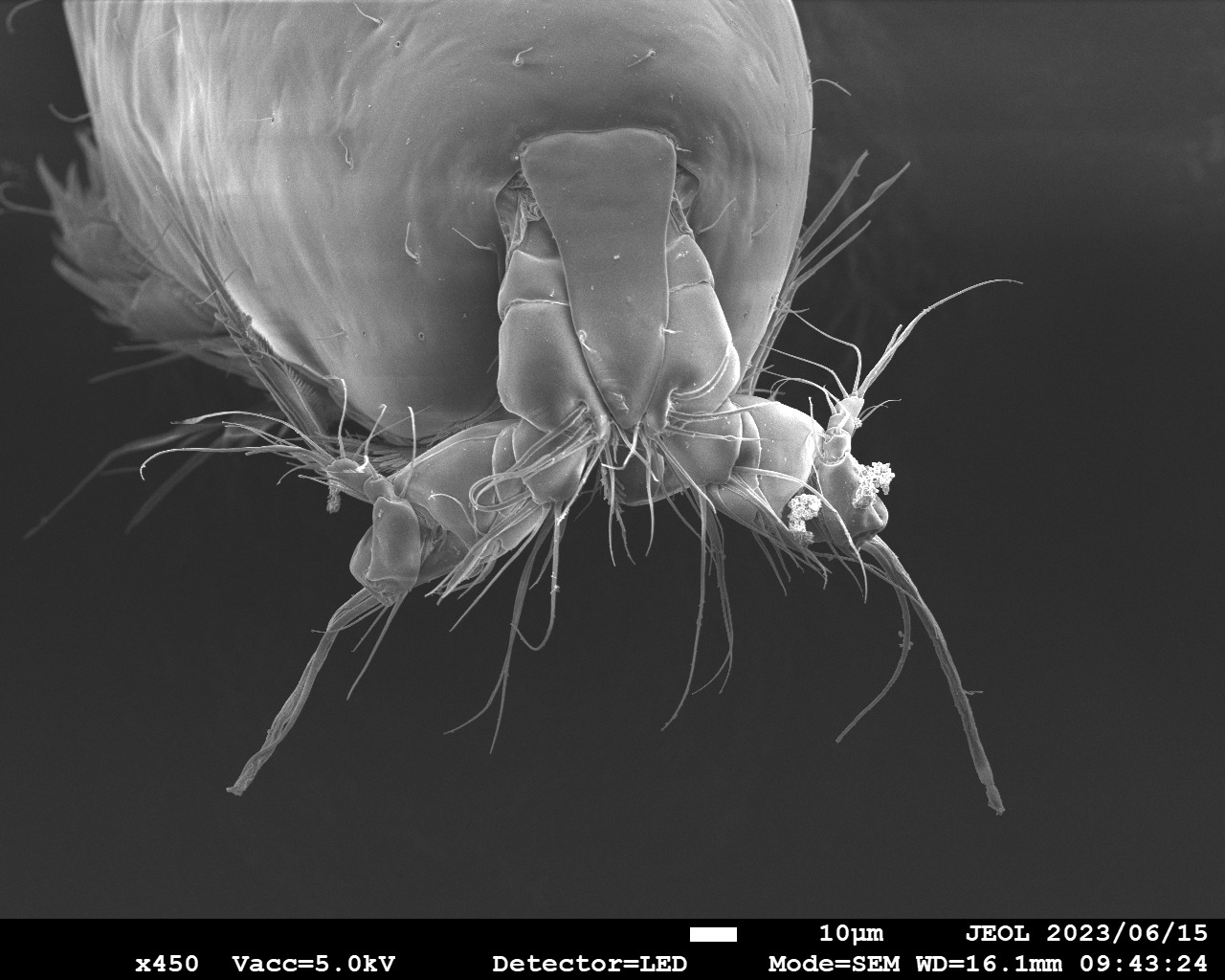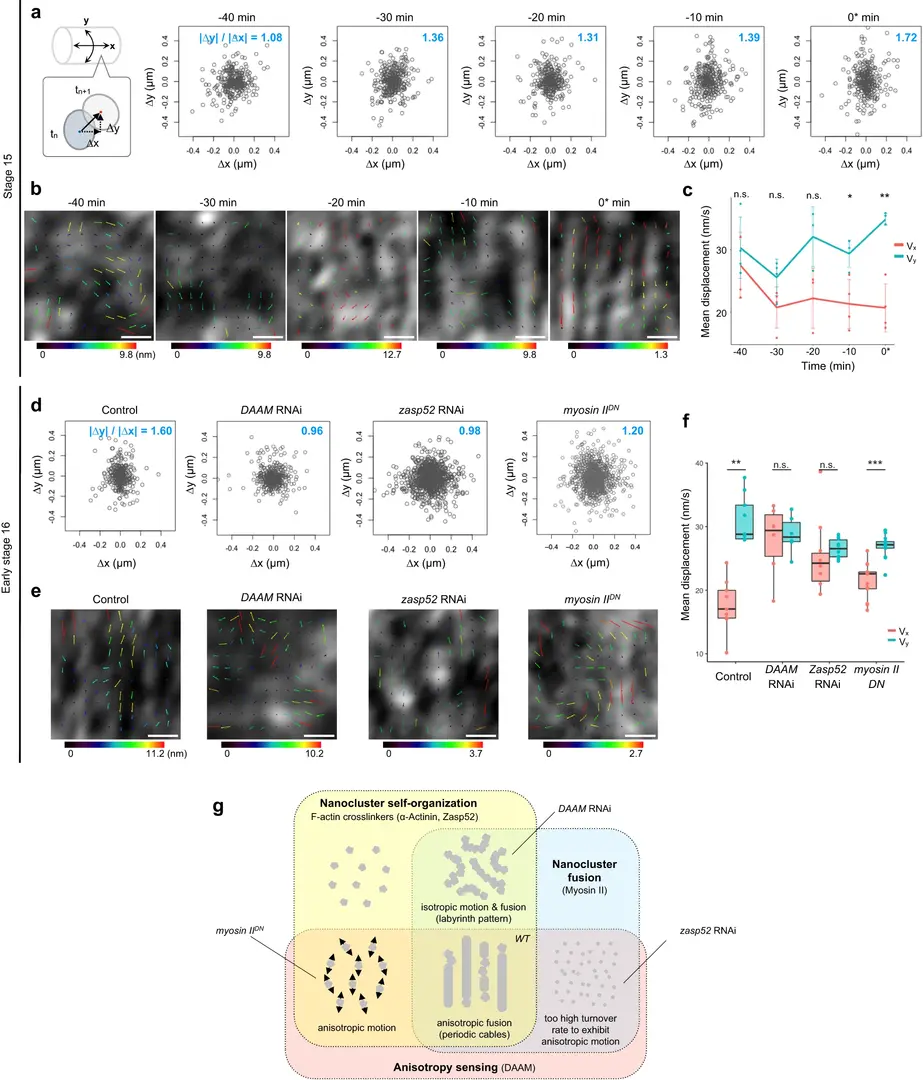FY2023 Annual Report
Physics and Biology Unit
Professor Jonathan Miller
From cephalopod camouflage and covid pandemiology to human cognition, natural language processing, and genome evolution, the mission of the Physics and Biology unit is to enable data to find its own voice through analytical, numerical, and machine-learning methods.
1. Staff
- Dr. Lucia Zifcakova, Postdoctoral Scholar
- Dr. Reuven Pnini, Technician
- Dr. Zdenek Lajbner, Technician
- Mr. John Parker, Technician
- Dr. Mustafa Sami, Technician
- Dr. Mehmet Arif Zoral, Postdoctoral Scholar
- Dr. Priscila Do Nascimento Biller, Postdoctoral Scholar
- Ms. Yoko Fujtiomi, Research Unit Administrator
- Ms. Vera Emelianenko, PhD student
- Ms. Irina Korshok, PhD student
- Md. Abrar Jahin, Visiting Researcher
- Ms. Mizumo Chiba, Visiting Researcher
- Dr. Ryuta Nakajima, Visiting Researcher
2. Collaborations
2.1 Detection and identification of cephalopod pathogens
- Type of collaboration: Joint research
- Researchers:
- Dr. Shinichi Nakamura, Okayama University of Science (OUS)
- Dr. Mehmet Arif Zoral, OIST; Dr. Zdenek Lajbner, OIST
2.2 Cell and organ morphogenesis
- Type of collaboration: Joint research
- Researchers:
- Dr. Shigeo Hayashi, RIKEN
- Dr. Mustafa M. Sami, OIST
2.2 Compositional GC% heterogeneity of invertebrate and vertebrate genomes
- Type of collaboration: Joint research
- Researchers:
- Dr. Radka Symonová, University of South Bohemia in České Budějovice
- Dr. Lucia Zifcakova, OIST; Dr. Zdenek Lajbner, OIST; Dr. Jonathan Miller, OIST
3. Activities and Findings
3.1 Targeting cephalopod pathogens
Contributors: Zoral MA, Lajbner Z, Zifcakova L, Emelianenko V, Nakamura S, Arakaki N, Wang CC, Nakajima R, Miller J.
Multiple research groups and companies worldwide are aiming at scientific and commercial cephalopod aquaculture. Disease management in cephalopod culturing represents a certain challenge. We focus on monitoring pathogens in wild and cultured cephalopods to improve animal welfare and the overall success of cephalopod culture, while securing safe and healthy animals for researchers and consumers.

Figure: Ikanecator primus Zoral and Lajbner 2024, male paratype. Newly discovered parasite on cephalopod eggs and juveniles. Recomended treatment described in provisional patent application number JP2024-039335.
3.2 Emergence of periodic circumferential actin cables from the anisotropic fusion of actin nanoclusters during tubulogenesis
Contributors: Sayaka Sekine, Mitsusuke Tarama, Housei Wada, Mustafa M. Sami, Tatsuo Shibata & Shigeo Hayashi
The periodic circumferential cytoskeleton supports various tubular tissues. Radial expansion of the tube lumen causes anisotropic tensile stress, which can be exploited as a geometric cue. However, the molecular machinery linking anisotropy to robust circumferential patterning is poorly understood. Here, we aim to reveal the emergent process of circumferential actin cable formation in a Drosophila tracheal tube. During luminal expansion, sporadic actin nanoclusters emerge and exhibit circumferentially biased motion and fusion. RNAi screening reveals the formin family protein, DAAM, as an essential component responding to tissue anisotropy, and non-muscle myosin II as a component required for nanocluster fusion. An agent-based model simulation suggests that crosslinkers play a crucial role in nanocluster formation and cluster-to-cable transition occurs in response to mechanical anisotropy. Altogether, we propose that an actin nanocluster is an organizational unit that responds to stress in the cortical membrane and builds a higher-order cable structure.

Figure: Circumferential motion of the actin nanoclusters is DAAM- and Zasp52-dependent.
a) The Motion anisotropy analysis of small actin nanoclusters during circumferential cable formation at stage 15. The x axis corresponds to the longitudinal axis, whereas the y axis corresponds to the circumferential axis of the tracheal tube. The circumferentially biased motion indicated by the ratio (|∆y | /|∆x | ) larger than unity became apparent from −30 min. b) Particle image velocimetry (PIV) analysis of the cortical actin dynamics in tracheal cells. The velocity vectors color-coded with the vector length are superposed. The minimum and maximum lengths (nm) of the vectors are indicated below the color box. Scale bar, 0.5 µm. c) Transition of mean displacement (nm/s) of the nanoclusters from isotropic phase to anisotropic phase calculated by the velocity vectors of PIV analyses. Line plots represent mean ± SD. The two-sided Student’s t test was performed for the statistical analysis. P = 0.466 in −40 min (n = 4), P = 0.0729 in −30 min (n = 4), P = 0.0657 in −20 min (n = 3), P = 0.0176 in −10 min (n = 4), or P = 0.0038 in 0* min (n = 4). ∗P < 0.05, ∗∗P < 0.01. d) The Motion anisotropy analysis of small actin nanoclusters in the genetically manipulated tracheal cells at early stage 16. e) The PIV analysis of the cortical actin dynamics. Scale bar, 0.5 µm. f) Comparison of mean displacement (nm/s) calculated via PIV analyses. Boxplots represent median plus minima and maxima with lower and upper quantiles. The two-sided Student’s t test was performed for the statistical analysis. P = 1.78e-6 in Control (n = 9), P = 0.728 in DAAM RNAi (n = 6), P = 0.436 in zasp52 RNAi (n = 10), or P = 8.98e-6 in myosin IIDN (n = 13). ∗P < 0.05, ∗∗P < 0.01. g) Venn diagram showing the relationship between three factors that regulate actin patterning in silico: Nanocluster self-organization enabled by the interaction of actin filaments and crosslinkers (light yellow); Nanocluster fusion induced by myosin II contractility (light blue); and Anisotropy sensing (light red). The phenotypes of RNAi for nanocluster components are well categorized in the Venn diagram.
3.3 Review on Cephalopod-omics: Emerging Fields and Technologies in Cephalopod Biology
Contributors: BADEN, Tom; BRISEÑO, John; COFFING, Gabrielle; COHEN-BODÉNÈS, Sophie; COURTNEY, Amy; DICKERSON, Dominick; DÖLEN, Gül; FIORITO, Graziano; GESTAL, Camino; GUSTAFSON, Taryn; HEATH-HECKMAN, Elizabeth; HUA, Qiaz; IMPERADORE, Pamela; KIMBARA, Ryosuke; KRÓL, Mirela; LAJBNER, Zdeněk; LICHILÍN, Nicolás; MACCHI, Filippo; McCOY, Matthew J.; NISHIGUCHI, Michele K.; NYHOLM, Spencer V.; OTJACQUES, Eve; PÉREZ-FERRER, Pedro A.; PONTE, Giovanna; PUNGOR, Judit R.; ROGERS, Thea F.; ROSENTHAL, Joshua C.; ROURESSOL, Lisa; RUBAS, Noelle; SANCHEZ, Gustavo; PEREIRA SANTOS, Catarina; SCHULTZ, Darrin T.; SEUNTJENS, Eve; SONGCO-CASEY, Jeremea O; STEWART, Ian Erik; STYFHALS, Ruth; TUANAPAYA, Surangkana; VIJAYAN, Nidhi; WEISSENBACHER, Anton; ZIFCAKOVA, Lucia; SCHULZ Grace; WEERTMAN, Willem; SIMAKOV, Oleg; ALBERTIN, Caroline B.
Few animal groups can claim the level of wonder that cephalopods instill in the minds of researchers and the general public. Much of cephalopod biology, however, remains unexplored: the largest invertebrate brain, difficult husbandry conditions, and complex (meta-)genomes, among many other things, have hindered progress in addressing key questions. However, recent technological advancements in sequencing, imaging, and genetic manipulation have opened new avenues for exploring the biology of these extraordinary animals. The cephalopod molecular biology community is thus experiencing a large influx of researchers, emerging from different fields, accelerating the pace of research in this clade. In the first post-pandemic event at the Cephalopod International Advisory Council (CIAC) conference in April 2022, over 40 participants from all over the world met and discussed key challenges and perspectives for current cephalopod molecular biology and evolution. Our particular focus was on the fields of comparative and regulatory genomics, gene manipulation, single-cell transcriptomics, metagenomics, and microbial interactions. This article is a result of this joint effort, summarizing the latest insights from these emerging fields, their bottlenecks, and potential solutions. The article highlights the interdisciplinary nature of the cephalopod-omics community and provides an emphasis on continuous consolidation of efforts and collaboration in this rapidly evolving field.

Figure: Research questions addressable with emerging technologies for cephalopods. Numbers in brackets refer to the numbers assigned to the different types of cephalopods. (1) Bobtail squid, (2) Loliginid squid, (3) Cuttlefish, and (4) Octopus.
4. Publications
4.1 Journals
- BADEN, Tom; BRISEÑO, John; COFFING, Gabrielle; COHEN-BODÉNÈS, Sophie; COURTNEY, Amy; DICKERSON, Dominick; DÖLEN, Gül; FIORITO, Graziano; GESTAL, Camino; GUSTAFSON, Taryn; HEATH-HECKMAN, Elizabeth; HUA, Qiaz; IMPERADORE, Pamela; KIMBARA, Ryosuke; KRÓL, Mirela; LAJBNER, Zdeněk; LICHILÍN, Nicolás; MACCHI, Filippo; McCOY, Matthew J.; NISHIGUCHI, Michele K.; NYHOLM, Spencer V.; OTJACQUES, Eve; PÉREZ-FERRER, Pedro A.; PONTE, Giovanna; PUNGOR, Judit R.; ROGERS, Thea F.; ROSENTHAL, Joshua C.; ROURESSOL, Lisa; RUBAS, Noelle; SANCHEZ, Gustavo; PEREIRA SANTOS, Catarina; SCHULTZ, Darrin T.; SEUNTJENS, Eve; SONGCO-CASEY, Jeremea O; STEWART, Ian Erik; STYFHALS, Ruth; TUANAPAYA, Surangkana; VIJAYAN, Nidhi; WEISSENBACHER, Anton; ZIFCAKOVA, Lucia; SCHULZ Grace; WEERTMAN, Willem; SIMAKOV, Oleg; ALBERTIN, Caroline B. (2023) “Cephalopod-omics: Emerging Fields and Technologies in Cephalopod Biology”, Integrative and Comparative Biology, icad087. https://doi.org/10.1093/icb/icad087
-
Sayaka Sekine, Mitsusuke Tarama, Housei Wada, Mustafa M. Sami, Tatsuo Shibata & Shigeo Hayashi, "Emergence of periodic circumferential actin cables from the anisotropic fusion of actin nanoclusters during tubulogenesis", Nature Communications, Jan. 2024. https://doi.org/10.1038/s41467-023-44684-z
4.2 Books and other one-time publications
Nothing to report
4.3 Oral and Poster Presentations
([NOTE] *Seminars and workshops by OIST faculty/unit members (either with or without other speakers), either at OIST or at other institutions than OIST, should be included in the 4.3 Oral and Poster Presentations.
- Lucia Zifcakova, Md. Abrar Jahin, "Perfectly conserved sequences (PCS) between human and mouse are significantly enriched for small-protein coding sequence", SMBE 2023 Annual Congress, July 23-27, 2023, Ferrara, Italy
- John Parker, Mustafa M. Sami, Jonathan Miller, Mei Kobayashi, “Patent Classification using Balanced Input for Naive Bayes”, The 74th Joint Conference of Electrical, Electronics and Information Engineers in Kyushu International Session, Sojo University, Kumamoto City, Japan, September 8, 2023
- Mehmet Arif Zoral, Zdenek Lajbner, Shinichi Nakamura, Lucia Žifčáková, Chen Chi Wang, Jonathan Miller. (2023) Co-infection patterns of intestinal cestode parasites in wild and cultured squid. The 6th Squid and Octopus Research Meeting(第六回 イカ・タコ研究会), Yokohama, October 13, 2023.
- Chiba Mizumo, Lajbner Zdenek, Nakajima Ryuta, Miller Jonathan, Kawamura Tomohiko, Iwata Yoko “Elucidation of camouflage selection and its adaptive significance according to the growth stage of oval squid”. The 6th Squid and Octopus Research Meeting(第六回 イカ・タコ研究会), Yokohama, October 13, 2023
- Mehmet Arif Zoral, Zdenek Lajbner, Shinichi Nakamura, Lucia Žifčáková, Chen Chi Wang and Jonathan Miller. Cestode parasites in wild and cultured squid. Okinawa Marine Science Network Workshop, Nishihara, Japan. November 2023.
- Lajbner Z, Zoral M, Zifcakova L, Emelianenko V, Arakaki N, Wang CC, Nakajima R, Miller J. (2024) Tracing Pathogens in Cephalopod Culture. In: World Fisheries Congress, Seattle, March 6, 2024
5. Intellectual Property Rights and Other Specific Achievements
Provisional patents JP2024-038,284 and JP2024-039,335.
6. Meetings and Events
6.1 Seminar
- Mustafa M. Sami, “Using of AI for medical applications”, Kobe Institute of Computing, Kobe, Japan, 13 Feb. 2024, (Invited Speaker).
-
Lajbner Z., “From fish to squid”, Keio University, 10 May, 2023
7. Computer programs -software
Mustafa M. Sami: Image-processing quantification tool for nanocluster motion analysis https://github.com/SayakaSekine/Nanocluster_motion
8. Other
Lucia Zifcakova was awarder Early career COI-NEXT grant JPMJPF2205 for her project "Monitoring biological and chemical agents in aquaculture efflux to protect environmental health".
NHK coverage of Prof. Nakajima's achievements including his participation in the unit research: https://www3.nhk.or.jp/nhkworld/en/shows/2105049/



